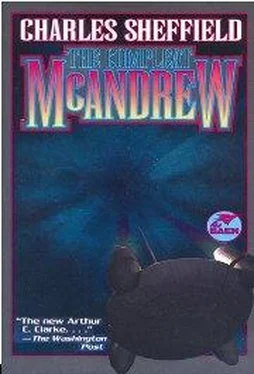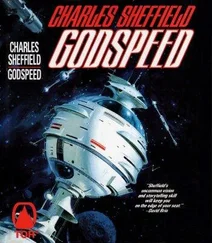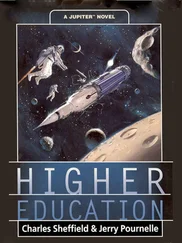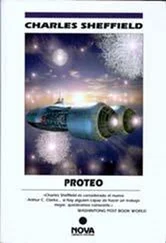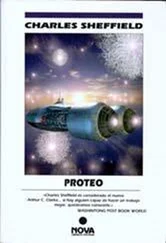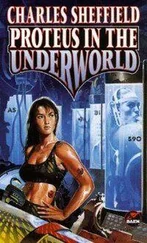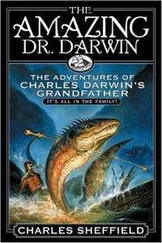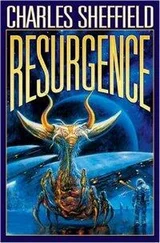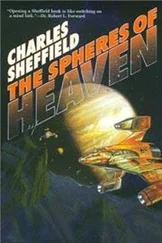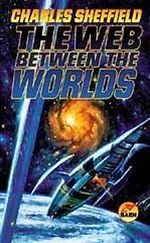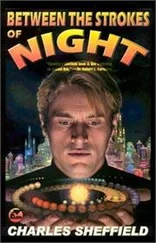The primary evidence for a finite age for the whole Universe comes from observation of distant galaxies. When we observe the light that they emit, we find, as was suggested by Carl Wirtz in 1924 and confirmed by Edwin Hubble in 1929, that more distant galaxies appear redder than nearer ones.
To be more specific, in the fainter (and therefore presumably more distant) galaxies, every wavelength of light emitted has been shifted toward a longer wavelength. The question is, what could cause such a shift?
The most plausible mechanism, to a physicist, is called the Doppler effect . According to the Doppler effect, light from a receding object will be shifted to longer (redder) wavelengths; light from an approaching object will be shifted to shorter (bluer) wavelengths. Exactly the same thing works for sound, which is why a speeding police car’s siren seems to drop in pitch as it passes by.
If we accept the Doppler effect as the cause of the reddened appearance of the galaxies, we are led (as was Hubble) to an immediate conclusion: the whole Universe must be expanding , at a close to constant rate, because the red shift of the galaxies corresponds to their brightness, and therefore to their distance.
Note that this does not mean that the Universe is expanding into some other space. There is no other space. It is the whole Universe — everything there is — that has grown over time to its present dimension.
And from this we can draw another immediate conclusion. If expansion proceeded in the past as it does today, there must have been a time when everything in the whole Universe was drawn together to a single point. It is logical to call the time that has elapsed since everything was in that infinitely dense singularity the age of the Universe . The Hubble galactic redshift allows us to calculate how long ago that happened.
Our estimate is bounded on the one hand by the constancy of the laws of physics (how far back can we go, before the Universe would be totally unrecognizable and far from the place where we believe today’s physical laws are valid?); and on the other hand by our knowledge of the distance of the galaxies, as determined by other methods.
Curiously, it is the second problem that forms the major constraint. When we say that the Universe is between ten and twenty billion years old, that uncertainty of a factor of two betrays our ignorance of galactic distances.
It is remarkable that observation of the faint agglomerations of stars known as galaxies leads us, very directly and cleanly, to the conclusion that we live in a Universe of finite and determinable age. A century ago, no one could have offered even an approximate age for the Universe. For an upper bound, most nonreligious scientists would probably have said “forever.” For a lower bound, all they had was the age of the Earth.
Asking one question, How old is the Universe? inevitably leads us to another: What was the Universe like, ten or twenty billion years ago, when it was compressed into a very small volume?
That question was tackled by a Belgian, Georges Lemaître. Early in the 1930s Lemaître went backwards mentally in time, to a period when the whole Universe was a “primeval atom.” In this first and single atom, everything was squashed into a sphere only a few times as big as the Sun, with no space between atoms, or even between nuclei. As Lemaître saw it, this unit must then have exploded, fragmenting into the atoms and stars and galaxies and everything else in the Universe that we know today. He might justifiably have called it the Big Bang , but he didn’t. That name seems to have been coined by Fred Hoyle, whom we met in the previous chronicle.
Lemaître did not ask the next question, namely, where did the primeval atom come from? Since he was an ordained Catholic priest, he probably felt that the answer to that was a given. Lemaître also did not worry too much about the composition of his primeval atom — what was it made of? It might be thought that the easiest assumption is that everything in the Universe was already there, much as it is now. But that cannot be true, because as we go back in time, the Universe had to be hotter as well as more dense. Before a certain point, atoms as we know them could not exist, because they would be torn apart by the intense radiation that permeated the whole Universe.
The person who did worry about the composition of the primeval atom was George Gamow. In the 1940s, he conjectured that the original stuff of the Universe was nothing more than densely packed neutrons. Certainly, it seemed reasonable to suppose that the Universe at its outset had no net charge, since it seems to have no net charge today. Also, a neutron left to itself has a fifty percent chance that it will, in about thirteen minutes, decay radioactively to form an electron and a proton. One electron and one proton form an atom of hydrogen; and even today, the Universe is predominantly atomic hydrogen. So neutrons could account for most, if not all, of today’s Universe.
If the early Universe was very hot and very dense and all hydrogen, some of it ought to have fused and become helium, carbon, and other elements. The question, How much of each? was one that Gamow and his student, Ralph Alpher, set out to answer. They calculated that about a quarter of the matter in the primeval Universe should have turned to helium, a figure very consistent with the present composition of the oldest stars. They published their results on April 1, 1948. In one of physics’ best-known jokes, Hans Bethe (pronounced Bay-ter , like the Greek letter Beta) allowed his name to be added to the paper, although he had nothing to do with its writing. The authors thus became Alpher, Bethe, and Gamow.
Apart from showing how to calculate the ratio of hydrogen to helium after the Big Bang, Gamow and his colleagues did one other thing whose full significance probably escaped them. In 1948 they produced an equation that allowed one to compute the present background temperature of the Universe from its age, assuming a Universe that expanded uniformly since its beginning in the Big Bang. The background radiation, corresponding to a temperature of 2.7 degrees above absolute zero, was discovered by Arno Penzias and Robert Wilson in 1964, and made the Big Bang theory fully respectable for the first time.
We now believe that hydrogen fused to form helium when the Universe was between three and four minutes old. What about even earlier times? Let us run the clock backwards, as far as we can towards the Big Bang.
How far back do we want to start the clock? Well, when the Universe was smaller in size, it was also hotter. In a hot enough environment, atoms as we know them cannot hold together. High-energy radiation rips them apart as fast as they form. A good time to begin our backward running of the clock might then be the period when atoms could form and persist as stable units. Although stars and galaxies would not yet exist, at least the Universe would be made up of familiar components, hydrogen and helium atoms that we would recognize.
Atoms can form, and hold together, somewhere between half a million and a million years after the Big Bang. Before that time, matter and radiation interacted continuously, and the Universe was almost opaque to radiation. After it, matter and radiation “decoupled,” became near-independent, and went their separate ways. The temperature of the Universe when this happened was about 3,000 degrees. Ever since then, the expansion of the Universe has lengthened the wavelength of the background radiation, and thus lowered its temperature. The cosmic background radiation discovered by Penzias and Wilson is nothing more than the radiation at the time when it decoupled from matter, now grown old.
Читать дальше
